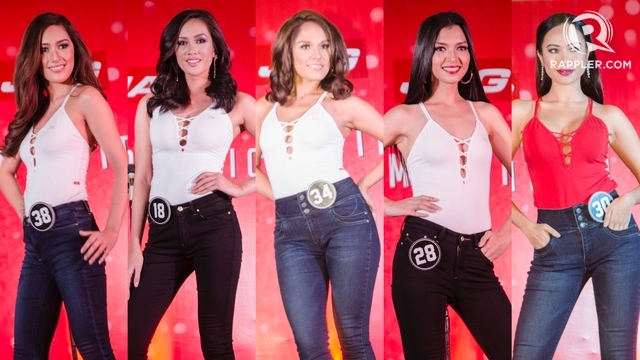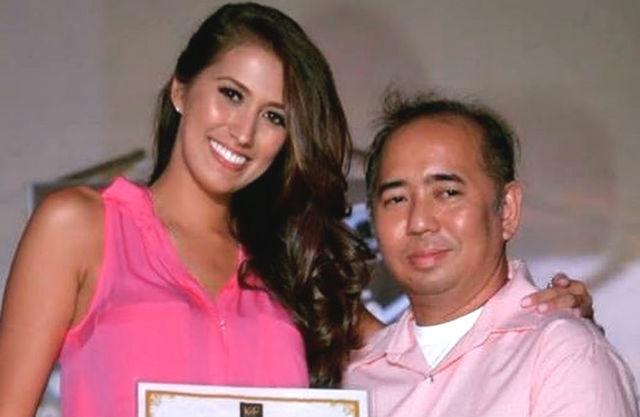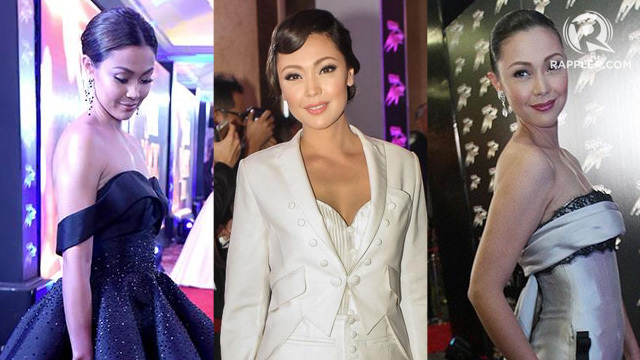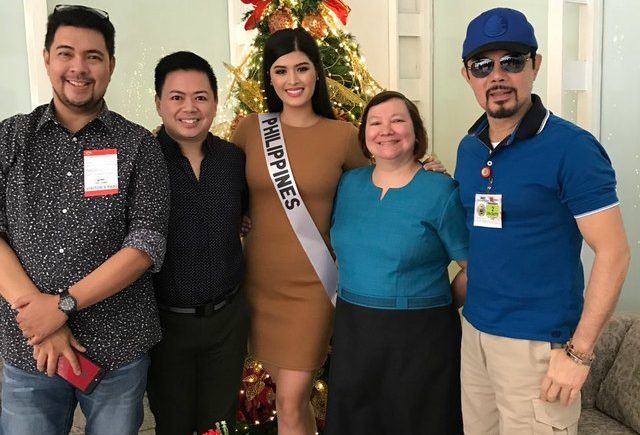“Quiet please! Umm, I would chose to be beautiful…”
These are just a couple of the infamous Q&A responses in Binibining Pilipinas history that made many cringe, and led to others making sweeping generalizations that beauty pageants are superficial. The numerous YouTube videos of Q&A “fails” also perpetuate the stereotype that beauty queens aren’t smart.
The Bb Pilipinas pageant was founded by Stella Marquez Araneta in 1964 and has since been the official franchise holder of the Miss Universe Organization. Binibining Pilipinas Charities Incorporated (BPCI) has produced many beauty queens who have become successful actresses, models, politicians, businesswomen, and most importantly, loving mothers. Despite that, there is still a widespread belief that beauty pageants are merely for intellectually challenged women.
This “women of change” campaign comes at a very good time. Take a look at the statistics:
-
In the World Economic Forum’s Global Gender Gap Report (GGPR) 2013, the Philippines ranked 5th out of 136 countries, making it the only Asian country to enter the top 10 since 2006. The Philippines’ Gender Gap Index (GGI) is 0.7832.
-
Iceland, Finland, Norway, and Sweden are the only countries with higher GGIs. A score of 1.0 mean men and women are statistically equal based on several parameters.
-
The GGPR index assesses countries on how well they divide resources and opportunities among male and female populations, regardless of the overall levels of these resources. The report measures the size of the gender inequality gap in 4 areas: economic participation and opportunity, educational attainment, political empowerment, and health and survival.
Between 1970 and 2009 the number of female-headed households increased from:
- 1970 – 10.0%
- 1990 – 11.3%
- 2003 – 15.4%
- 2009 – 21.2%
Overseas Filipino workers in 2012 – 2.22 million in total
- Female – 1.072 million (48.3%)
- Male – 1.148 million (51.7%)
The literacy rate in terms of gender:
- Female – 97.6%
- Male – 97.4%
Data from the Commission on Higher Education (CHED) in 2014/2015:
- Higher education graduates – 632,076 graduates in total
- Female graduates – 365,369 graduates
- Male graduates – 266,707 graduates
According to the Philippine Statistics Authority (PSA), there were 41,342,000 employed in 2015:
- Female – 16,280,000
- Male – 25,062,000
*** Figures were rounded off in the report.
- Total Philippine population – 27,087,685 (1960) and 92,337,852 (2010)
- Male – 13,662,869 (1960) and 46,459,318 (2010)
- Female – 13,424,816 (1960) and 45,638,660 (2010)
Simply stated, women in the Philippines are highly educated and productive members of society who have active roles in all facets. The opportunities of education and employment are open to them and they are taking advantage of it.
Today, the Filipina is a beautiful, confident, educated, and empowered woman who is actively contributing to the progress of our nation.
The modern Filipina is well represented by the 40 candidates of Bb Pilipinas 2017. These are women who can make a difference for the better in our society and are catalysts of positive change in the world.
In this year’s Bb Pilipinas batch, 34 of the 40 candidates have college degrees, both from local and international universities. Seven of the 34 college graduates also received academic honors (magna cum laude, cum laude, with honors).
Based on the listed records on the Bb Pilipinas website, we have the following:
- 7 candidates successfully passed national licensure exams for their profession
- Two certified public accountants (Bb #8 Leitz Camyll Ang from Malabon and Bb #28 Juliana Kapeundl from Balayan, Batangas)
- One European-licensed architect (Bb #34 Gabriela Patricia Ortega from Makati City)
- Two licensed interior designers (Bb #4 Jessica Ramirez from Oriental Mindoro and Bb #38 Ana Patricia Asturias from Tacloban)
- One licensed veterinarian (Bb #3 Maria Gail Tobes from Catarman, Northern Samar)
- One license nurse (Bb #30 Mae Liezel Ramos from Naga City)
- One taekwondo gold medalist in the SEA Games (Bb #17 Camille Manalo from Silang, Cavite)
- One cadet pilot (Bb #18 Nelda Ibe from Tarlac City)
- One copywriter for a local beauty brand (Bb #36 Gillian Colcol from Antipolo City, Rizal)
- 8 fashion models
- 4 flight attendants
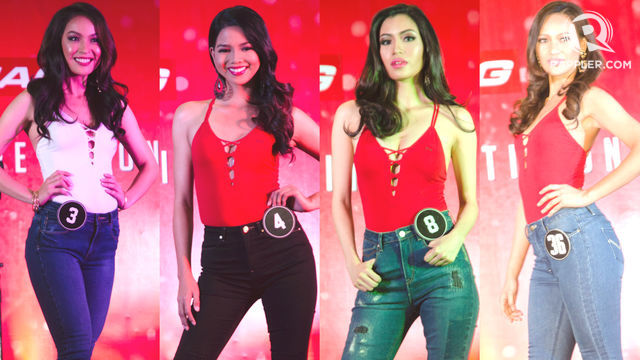
(L-R) Maria Gail Tobes, Jessica Ramirez, Leitz Camyll Ang, and Gillian Colcol. Photos by Rob Reyes/Rappler
BPCI has done an outstanding job choosing intelligent and accomplished young women. These women joined the pageant simply because they can and aren’t bound by any stereotypes.
Last year’s winners already epitomized this new, empowered Bb Pilipinas queen.
- Bb Pilipinas-Universe Maxine Medina has a degree in Interior Design.
- Bb Pilipinas International and Miss International 2016 Kylie Versoza is a preschool teacher.
- Bb Pilipinas Grand International Nicole Cordoves was a speechwriter at the Department of Finance.
- Bb Pilipinas Intercontinental Jennifer Ruth Medina is a registered nurse.
- Bb Pilipinas Globe Nichole Manalo is a registered nurse.
- Bb Pilipinas Supranational Joanna Louise Eden was an International Studies student at De La Salle University.
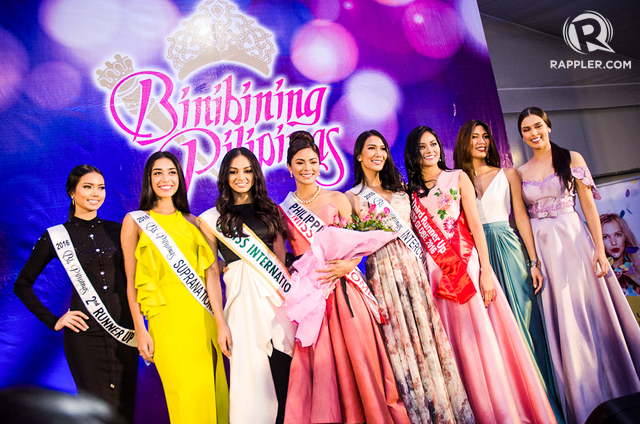
The 2016 batch during the send-off of Miss Universe 2016 Maxine Medina in January. File photo by Rob Reyes/Rappler
We’ve often heard this question asked at pageants: “Would you choose to either be beautiful or smart?” There is no need, however, to make a woman choose one or the other. It just perpetuates that stereotype that beauty contestants are airheads. In the spirit of change, it is my hope that beauty pageants refrain from asking this question.
Being intelligent or educated doesn’t always equate to good speaking skills or being witty in answering a question within 30 seconds in front of thousands of people while wearing a swimsuit and high heels. Academic achievement is not a guarantee that they won’t mess up in the Q&A portion. Even in life, it does not determine our success but is only part of the elements needed for success.
On top of that, these women learn from their pageant life how to endure grueling schedules, undergo hours of physical training, practice discipline in dieting, deal with social media bashing, and master the art of dealing with all kinds of people.
It’s not simply one’s resumé that matters, but the totality of the person that separates a winner from the rest.
Unfortunately, there will always be people who believe that beauty pageants are sexist and demeaning to women. In the Philippines, particularly, some consider pageants as the venue where rich men and politicians find their trophy wives. Worse yet are those who believe that some candidates are high-class prostitutes or starlets looking for their quick road to fame.
Sadly, these are beliefs that have been espoused throughout the years. While there’s no denying that some may have been true, it is extremely unfair to condemn beauty pageants completely.
Regardless of how Miss Universe or Bb Pilipinas would be rebranded to show that candidates are empowered young women, some will still be against them. In fact, even if there were 40 candidates who are UP summa cum laudes working as CEOs, there will still be narrow-minded naysayers putting down the pageant.
But this shouldn’t stop these amazing organizations from giving young women an opportunity to show the world what they are capable of doing. Pageants let candidates raise awareness of important causes and enable them to reach out to those in need.
For more than half a century, young Filipina girls have dreamed of becoming Bb Pilipinas. Women have since redefined their role in society, showing young girls that dreams and goals can be achieved with hard work.
The modern beauty queen – passionate and driven – reflects the new ideal of what it means to be beautiful.
—
This article originally appeared in Rappler.
All photos courtesy of Rappler unless otherwise indicated.

